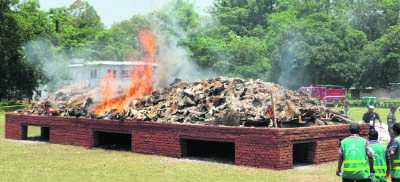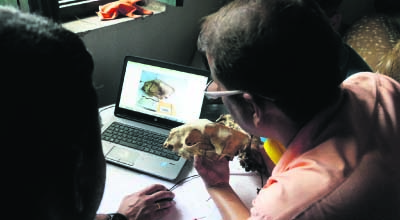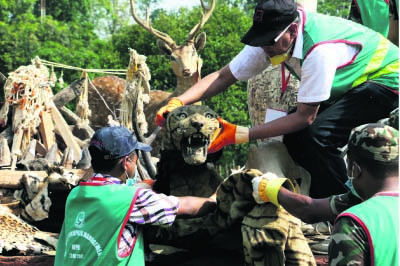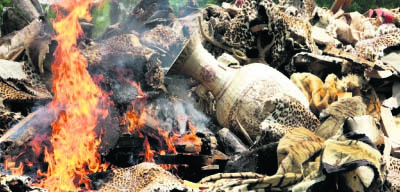
For the first time in 20 years, more than 4,000 wildlife parts of 48 different species including 67 tiger skins and 357 rhino horns were burned on 22 May 2017.

NTA instructs Ncell to pay Rs 19 billion, warns of revoking lic...

Prior to burning, a rigorous audit was carried out enlisting details such as – common and scientific name; number, type, size and specifications; date of collection; photographs – and a barcode for each item audited.
The wildlife parts kept at two secure repositories: Chitwan National Park headquarters and the Armed Forest Guard Training Centre in Tikauli were re-verified on 21 May 2017 before it was transported in a container to Chitwan National Park for the burn.

Following the cabinets’ decision to burn wildlife stockpiles on 18 May 2017, a 5-meter-wide and 15-meter-long incinerator was constructed in Chitwan National Park headquarters within three days. However, some wildlife parts such as elephant tusks couldn’t be destroyed given the lack of required technology for crushing the ivory before burning.

The burn was also a means of managing the stockpile of wildlife parts collected from over 20 years that were already decaying. Out of the lot, some wildlife parts whose cases are still under investigation and those required for future scientific studies are preserved by the government. The ceremony led by Ministry of Forests and Soil Conservation was carried out in the presence of Minister for Foreign Affairs Prakash Sharan Mahat. Likewise, security chiefs, representatives of WWF Nepal and other conservation agencies, diplomatic missions, civil society, local communities and media personnel witnessed this historic event.

Nepal has achieved a significant milestone in conservation in the last few years. This burn is a demonstration of Nepal’s commitment towards zero tolerance of wildlife crime and a clear message to the world that no one should own the body parts of wild animals besides the wild animal themselves.
Text & Photo: Simrika Sharma



































